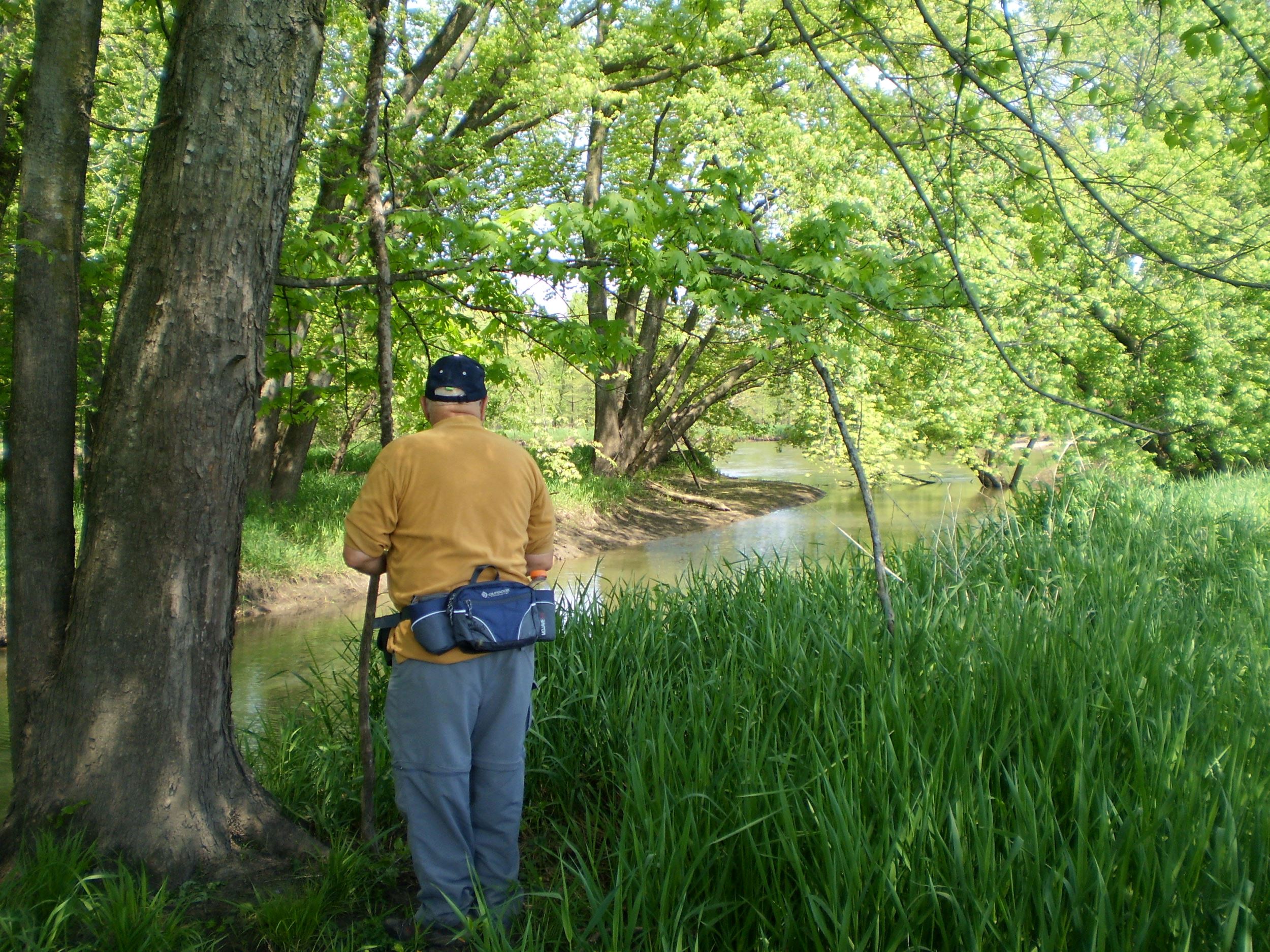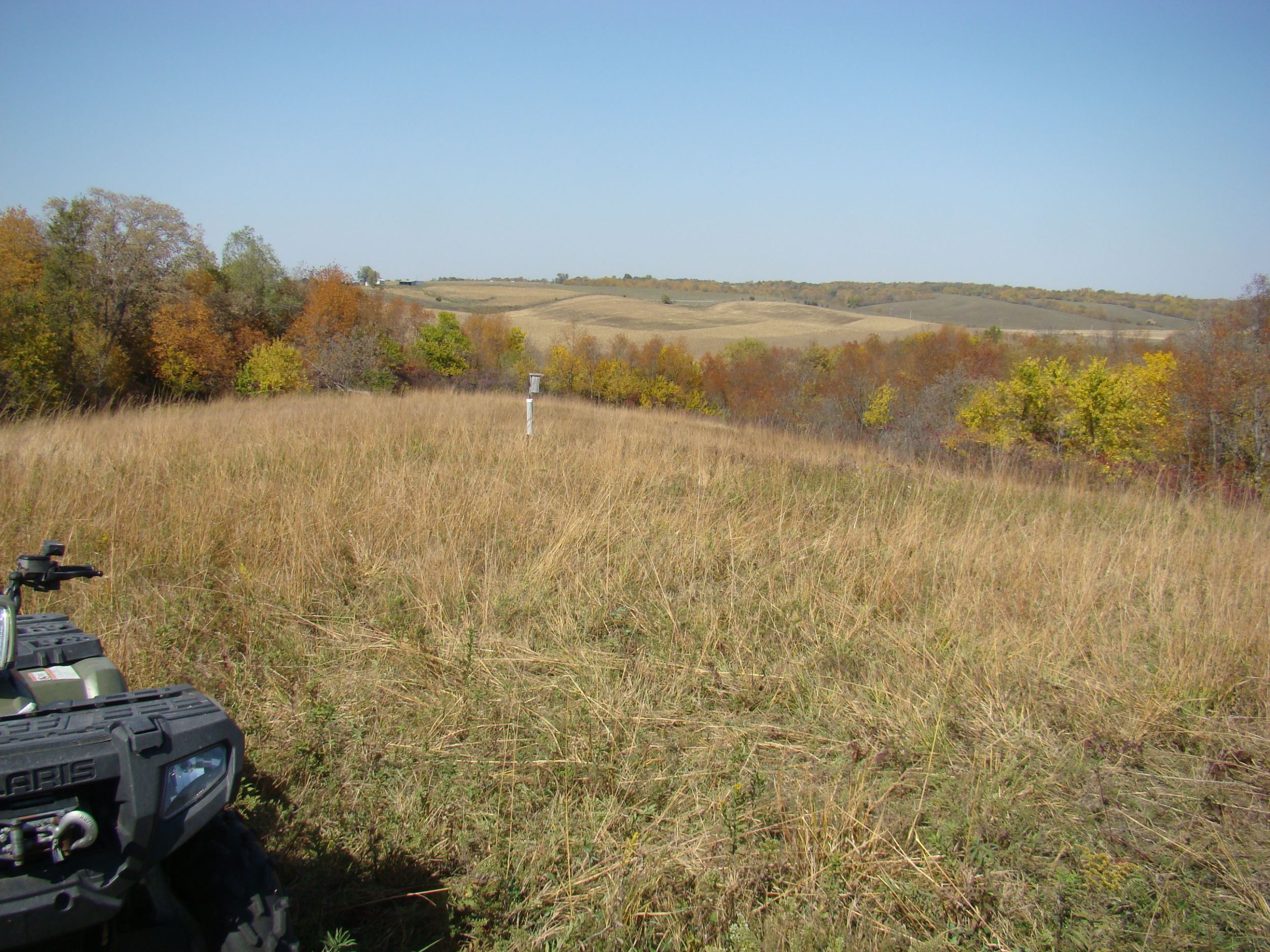On Sacred Ground - Conservation, connection
By Katy Heggen on January 30, 2019 in Blog
Why?
It’s a question that comes up often in conversations with Iowans about their decision to permanently protect their land. Some speak with an affection for a place rooted in the past, others, a vision for the future.
But if you strip away the specifics, more often than not, it comes down to connection.
Everyone needs a place they can go to feel connected. Many people find it in nature. Doing so can be — in the broadest definition of the word — a “spiritual” experience.
For some, it’s a sense of responsibility rooted in their faith that moves them to protect, restore and steward the land. For others, it is nature itself that provides a sense of place, purpose and belonging. Often, the two are intertwined.
For the beauty of the earth
Drive far enough along US 30 and you’ll come across Wheatland, a small town on the west side of Clinton County in east central Iowa. Nestled into the surrounding hills is the Our Lady of the Prairie Retreat (OLPR), a spiritual retreat center overlooking the Wapsipinicon River.
For nearly 20 years, the Congregation of the Humility of Mary (CHM), an order of Catholic sisters based in Davenport, have run the center, offering people of all faiths — or none — a place to come reflect, meditate and appreciate the surrounding beauty.
“'Humility' comes from the Latin word ‘humus’ which means ‘of the earth,” said Sister Marcia Eckerman, CHM, who lived and served at OLPR for five years. “For us, that means being grounded in who we are. OLPR gives people the opportunity to find their groundedness, to obtain a deeper understanding of themselves, God in their life and the interconnectedness that exists between nature and human beings.”
CHM founded Ottumwa Heights College (OHC), which among its other educational offerings provided faith formation resources for adults. When the sisters sold the college in the late ‘70s, they began exploring ways to continue to provide opportunities for spiritual growth.

Throughout the 1980s, Sr. Joann Kuebrich of CHM, and Fr. Vincent Fabula of the Order of Cistercians of the Strict Observance — both former OHC faculty members — led faith formation programs in rural parishes throughout the region. In time, the need for a dedicated space became apparent. They came upon a 200-acre farm that offered the spiritual stillness they’d been seeking. Over the years, they restored the farm, reconstructing the surrounding prairie, woodland and wetlands. When Fr. Fabula passed away in 1998, the farm was offered to CHM. They’ve run it ever since.
In recent years, at the suggestion of long-time CHM supporters Joan and Richard Meierotto, the sisters began exploring ways to permanently protect the land. After much thoughtful discussion among the order and laity, CHM gathered together this fall to celebrate the signing of the Our Lady of the Prairie Conservation Easement with INHF, which permanently protects 80 acres of the farm. The move ensures the serene surroundings will always remain, and aligns with the sisters’ commitment to care for creation set forth in their Land Ethic and Principles of Sustainability.
“We believe we are all part of God’s creation, not beings above or outside of it,” said CHM Vice President Sister Johanna Rickl. “We are invited and compelled to continue this evolution of creation.”
Restorative powers
Judy Felder and her prairie restoration partners Mary Brown and Sandy Rhodes also spent years searching for the right piece of land. A place where they could realize their shared dream of undertaking a prairie restoration project that would create a refuge for prairie flora and fauna, and serve as an example of the potential present in highly disturbed habitats.
 “I think all three of us fell in love with the property instantly,” Felder said. “I can remember coming around the curve of the road that borders the property and looking up at the hills and thinking, ‘This is it.’ It was like somebody hit me in the chest.”
“I think all three of us fell in love with the property instantly,” Felder said. “I can remember coming around the curve of the road that borders the property and looking up at the hills and thinking, ‘This is it.’ It was like somebody hit me in the chest.”
Judy isn’t a religious person. Her relationship to the land isn’t faith- based. Rather, her belief in all that is good is based in the land itself.
“I get my grounding — both literally and figuratively — from the land. It keeps me centered, balanced and connected,” Felder said. “I did not come to this from any sort of preconceived place, the land has given that to me. I have a spirituality, but it has come directly from nature. It’s an integral part of who I am.”
In recent years, the landscape surrounding Indiangrass Hills has shifted as conventional farming in the area has intensified. Her faith in the prairie’s — and in her own — ability to persevere has been tested. In these times, as in others, she turns to the land.
“I am so grateful to have had the opportunity to bond to a place, observe things happen over time and season, and watch those things change again and again. So many people don’t have that. They don’t even know they need it,” said Felder. “Everything changes. It’s about figuring out how to adapt to it, not succumb to it.”
Judy, Mary and Sandy permanently protected Indiangrass Hills’ 640 acres with a conservation easement in 2005 — just weeks before Sandy passed away from cancer. Though they set out to create a place of refuge for the prairie, it has become a source of renewal for Judy and countless others.
“That place out there isn’t really ours. We’re just taking care of it for a while and hoping it will last into the future. It’s meant to be shared,” she said.
A place to be
Patrick Swanson grew up next to a nature preserve in West St. Paul, Minn., and developed a love for the outdoors at an early age. He continued to expand his affinity for nature throughout adulthood, first in and around Ann Arbor, Mich. during graduate school, and later in the Loess Hills near his home in Omaha.
“I’ve always felt a connection with nature. It’s something I grew up with. The notion that it went deeper didn’t infiltrate my consciousness until adulthood,” Swanson said.
Swanson came to crave a place of his own where he could have a lasting impact. His search eventually led him to 60 acres just outside of Council Bluffs. Due to a series of events, Swanson was initially unable to purchase the property, but the opportunity later resurfaced. In retrospect, Swanson sees this as an intervention.

“If your heart is open to the possibility that God provides opportunities to journey with Him on a purposeful path, it is difficult to deny the significance of the opportunity when you understand it is being presented to you,” Swanson wrote in “One Man and a Chainsaw,” a book he published about his experience. “But you are given free will to choose whether or not to travel with Him on that journey. Such was the case for me. I was not entirely con dent that I could take on the many responsibilities I would have to bear if I purchased the land. Nevertheless, I felt compelled to do so based on an upwelling of faith that overruled the detracting dictates of reason.”
Neither faith nor restoration were at the forefront of Steve Laughlin’s mind 20 years ago when his long-time hunting partner, Kelley Donham, suggested they buy some farmland to hunt pheasants and train birddogs. When Steve and Kelley first looked at a 200-acre Mahaska County farm, they were not impressed.
“There was next to no pheasant habitat on it. It was covered with ankle-high brome grass. I thought to myself, ‘No self-respecting pheasant would use this place,’” Laughlin said.
 Still, the place had its appeal, so they bought it. Through efforts to improve habitat, Steve and Kelly learned about the native prairie patches scattered around the property. They conducted prescribed burns, but saw limited results. As retirement approached, Steve begun thinking about undertaking a large-scale restoration, but doubted the land’s potential. Not expecting much, he called INHF President Joe McGovern, who much to Steve’s surprise, was excited about the land and its possibilities. It was at this point that Steve began thinking about his faith.
Still, the place had its appeal, so they bought it. Through efforts to improve habitat, Steve and Kelly learned about the native prairie patches scattered around the property. They conducted prescribed burns, but saw limited results. As retirement approached, Steve begun thinking about undertaking a large-scale restoration, but doubted the land’s potential. Not expecting much, he called INHF President Joe McGovern, who much to Steve’s surprise, was excited about the land and its possibilities. It was at this point that Steve began thinking about his faith.
“After 25 years of being deeply involved in our local church we had learned the principles of stewardship,” Laughlin said. “We decided that stewardship of the land was just as important a calling and we felt led to pursue our passion for nature and our desire to protect, restore and care for the land.”
Sustained by a love of the land, their faith and an innate sense of purpose, both Swanson and Laughlin donated conservation easements to INHF — Laughlin in 2010 and Swanson in 2011 — permanently protecting the corners of creation they have worked so hard to restore.
“After more than ten years of these routines, I can clearly see how much impact just one man and a chainsaw can have on a landscape,” wrote Swanson. “I am also perhaps now more acutely aware that these experiences have impacted me as much as the landscape.”
All are welcome
CHM opened the OLPR Conservation Easement signing with a song: “All are Welcome.” It was a fitting selection because that’s the thing about nature — it belongs to all of us. It binds us together. Perhaps that’s the most powerful connection that exists — the one that we, inhabitants of this common home, share with each other.
“It’s wonderful to have a place where you can go, lay everything aside and just let yourself sink into that spiritual space,” Rickl said. “That is something everyone can relate to.”